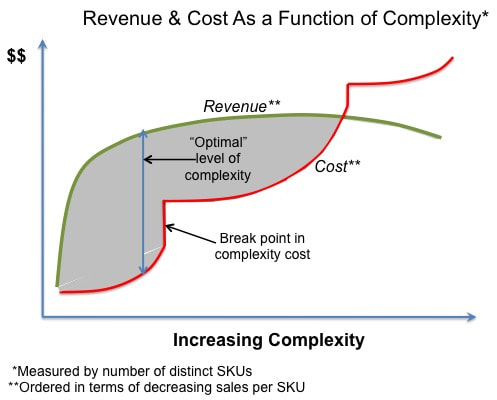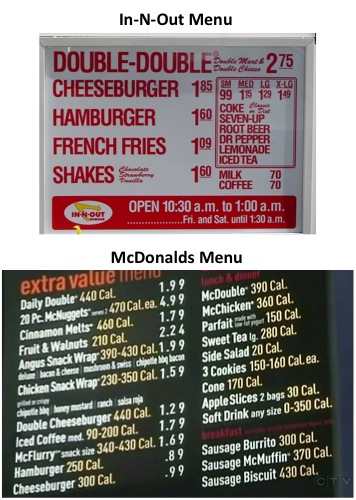|
Imagine you’re a brand manager for a consumer packaged goods product, clawing for tenths of a percent of market share against aggressive national and store-brand competitors. The pressure to add product line extensions are constant and seemingly compelling:
Examples of product line proliferation abound:
The tech sector also often falls prey to allowing excessive product-line complexity to weaken brand images and value propositions, as exemplified by Evernote. Founded in 2008, Evernote is a cross-platform, “freemium” app designed for note taking and organizing and archiving personal information. In other words, Evernote is designed to help individuals and work teams store and retrieve any information in any format on whatever devices they happen to be working on. By 2013, the company seemed to be on a roll; it had registered eighty million users and attracted over $300 million in investment from venture capitalists who valued the company at one billion dollars. But over the next two years, the company ran into trouble. In 2015, Evernote laid off nearly 20 percent of its workforce, shut down three of its ten global offices and replaced its CEO. It turns out that the vast majority of Evernote’s users only signed up for the free app and didn’t see enough value to upgrade to a paid subscription. Struggling to generate revenue, Evernote lost its focus and continuously released new products that added complexity, and often performed poorly. The company developed so many features and functions that it became increasingly difficult to explain to newcomers or even veteran users exactly what the product was. As Evernote’s former CEO Phil Libin explained, “people go and they say, ‘Oh, I love Evernote. I’ve been using it for years and now I realize I’ve only been using it for 5 percent of what it can do.’ And the problem is that it’s a different 5 percent for everyone. If everyone just found the same 5 percent, then we’d just cut the other 95 percent and save ourselves a lot of money. It’s a very broad usage base. And we need to be a lot better about tying it together.” Evernote wound up spreading itself too thin and lost sight of its core identity and primary consumer value proposition. To avoid this common management trap, let’s pause for a reality check on the true impacts of product complexity. The harsh reality is, the vast majority of product line extensions do not make financial sense. Virtually every management consulting company has an online white paper outlining their approach to dealing with the problem of excessive product line complexity. Try Googling “Product Complexity + _______” and you’ll see what I mean from McKinsey, BCG, Bain, Booz, Accenture, AT Kearney , Roland Berger et al. Academics have also weighed in with innumerable scholarly studies on the same issue. If you’re not familiar with the literature, I’ll spare you the effort by recounting four main takeaways:
These solutions are analytically elegant, mathematically precise and rigorously prescriptive. Have the quants really provided an viable approach to avoid the pervasive challenge of excess product line complexity? Actually, no. The problem is that these efforts typically treat the symptoms but not the root cause of excessive product line complexity. Unless companies address the underlying drivers of bloated product lines, they are likely to slip back into bad habits after a crash complexity reduction initiative. Not unlike yo-yo diets, when it comes to excessive product line complexity, recidivism rates are quite high. Moreover, technocratic solutions to optimize SKU counts overlook the profoundly more important link between product line complexity and overall business strategy. Both these points warrant explanation. Why do companies tend to add too much product line complexity? Marketing professionals pride themselves on their creativity and responsiveness to evolving customer needs. The urge to pursue new market opportunities and/or to respond to competitive threats are considered hallmarks of strong management. Consider for example the following rationales a brand manager might use to justify product line extensions:
Fundamental strategic choice: broad market coverage vs. targeted distinctiveness By this rationale, Apple should have responded to Samsung’s introduction of a large screen smartphone a long time ago. And Chipotle should have added a breakfast burrito. And In-N-Out Burger should have tried to appeal to new customers with a variety chicken, fish, egg and sausage menu items. What’s wrong with these companies?! Each of these companies has made a concerted choice to limit the range of merchandise they bring to market, focusing instead on delivering dominantly superior products in selected categories. Limiting product complexity thus lies at the very core of these companies’ business strategy. Their success — each has significantly outperformed sector competition — is driven as much by what they are NOT willing to do as by what they are willing to pursue. Take In-N-Out Burger for example. When is the last time you heard anyone rave about the taste of McDonald’s cheeseburgers in the same reverential terms as In-N-Out’s customer evangelists? Why is that? On the surface, both fast food chains are selling similar products at similar price points. But In-N-Out burgers taste better because:
Unlike In-N-Out, whose only entrée is hamburgers, and who restricts store hours to reflect minimal menu offerings and who limits geographic coverage to territories where the quality of locally sourced food items can be strictly controlled , McDonalds has chosen to compete on the basis a broad menu choice, global store ubiquity and extended service hours (often 24X7). But carrying such a wide array of food products around the globe complicates McDonalds’ logistics and service operations, requiring bulk shipments of frozen food products, in-store freezers, and pre-cooked orders kept warm by heat lamps in each establishment. The resulting quality differences are very real, dictated by structural differences in the underlying product line strategies. This isn’t a case of a right vs. wrong strategy (both have been successful), but simply a reflection of two companies that have chosen to compete on very different terms. The fact remains, product complexity DOES affect quality, and the choice of ever-expanding line extensions is never without adverse consequences. Chipotle provides another example of competing on the basis of limited product complexity. In a recent article, Fortune Magazine noted that: “the Chipotle menu is limited to four core basics, but it offers a range of garnishes like salsa and cheese and guacamole that can produce scores of combinations. Chipotle serves neither dessert nor coffee (too complicated). There’s no ‘dollar menu’ or ‘limited time offers’ (too gimmicky). And While the Dulles Airport restaurant serves scrambled eggs for breakfast, Chipotle has declined to begin breakfast operations in any of its other 1,150 restaurants.” Chipotle’s approach also demonstrates the power of “versioning”, wherein a company sharply limits its core product line offering (to control costs and enhance quality), but still caters to varying consumer tastes with low cost add-ons and accessories which are simple to provide. Chipotle’s product line strategy was highly successful in the fast casual restaurant category, propelling the company's stock to grow nearly 40 percent per year during the first five years of this decade. But a series of food poisoning outbreaks in 2015 shook customer and shareholder confidence in the company's quality control processes, from which Chipotle has yet to fully recover. Less Can Be More Determining optimal product line strategy is not strictly an analytical exercise to be turned over to technocrats armed with elegant analytical models. While companies should certainly seek to selectively thin out non-performing product lines over time, a far more important strategic imperative is choosing the basis upon which your company wishes to compete: broad market coverage vs. targeted product superiority. For companies like In-N-Out Burger, Chipotle’s, Apple and many others, there is no such thing as a free lunch. These companies could not have consistently achieved product superiority without explicitly choosing to limit the range of their product offerings. When it comes to product line complexity, less can be more.
2 Comments
9/6/2018 10:53:33 am
This is the right blog for anyone who wants to find out about this topic. You realize so much its almost hard to argue with you (not that I actually would want?HaHa). You definitely put a new spin on a topic thats been written about for years. Great stuff, just great!
Reply
Your comment will be posted after it is approved.
Leave a Reply. |
Len ShermanAfter 40 years in management consulting and venture capital, I joined the faculty of Columbia Business School, teaching courses in business strategy and corporate entrepreneurship Categories
All
Archives by title
How MIT Dragged Uber Through Public Relations Hell Is Softbank Uber's Savior? Why Can't Uber Make Money? Looking For Growth In All The Wrong Places Three Management Ideas That Need to Die Wells Fargo and the Lobster In the Pot Jumping to the Wrong Conclusions on the AT&T/Time Warner Merger What Kind Of Products Are You Really Selling? What Shakespeare Thinks About Brian Williams Are Customer-Friendly CEO’s Bad for Business? Uncharted Waters: What to Make Of Amazon’s Chronic Lack of Profits What Happens When David Becomes Goliath…Are Large Corporations Destined To Fail? Advice to Publishers: Don’t Fight For Your Honor, Fight For Your Lives! Amazon should be viewed as a fierce competitor in its dispute with publisher Hachette Men (And Women) Behaving Badly Why some brands “just don’t get no respect!” Courage and Faustian Bargains Sun Tzu and the Art of Disrupting Higher Education Nobody Cares What You Think! Product Complexity: Less Can Be More Apple's Product Strategy: No News Is Good News Willful Suspension of Belief In The Book Publishing Industry Whither Higher Education Timing Is Everything Teachable Moments -- The Curious Case of JC Penney What Dogs Can Teach Us About Business Are You Ready For Big-Bang Disruption? When Being Good Isn’t Good Enough Is Apple Losing Its Mojo? Blowing Up Old Habits What Is Apple's Product Strategy--Strategic Rigidity or Enlightened Expansion Strategic Inertia Strategic Alignment Strategic Clarity Archives by date
March 2018
|




 RSS Feed
RSS Feed